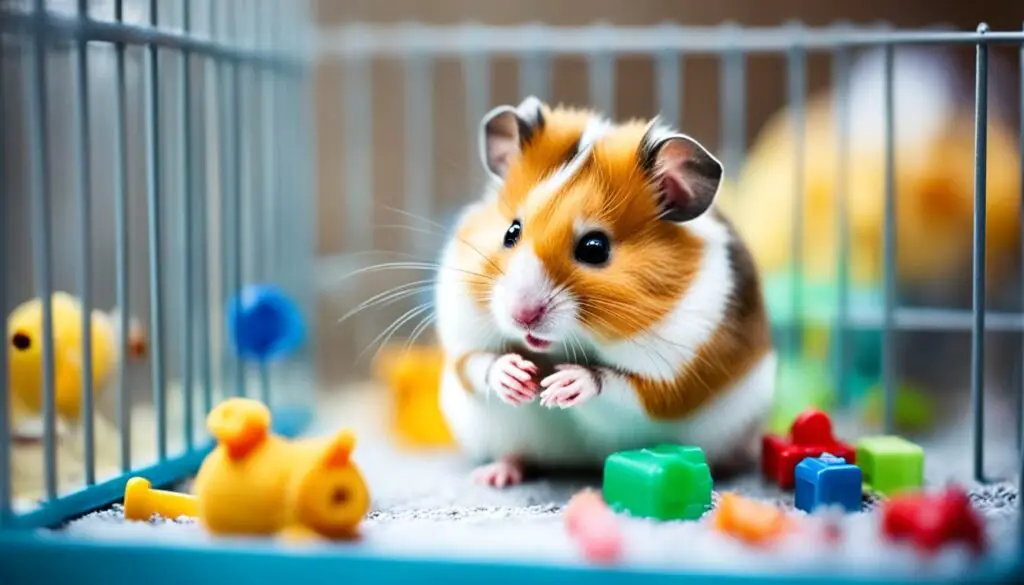Imagine coming home after a long day, feeling tired and worn out. As you enter your quiet and empty house, you’re greeted by a sense of loneliness. But then, you catch a glimpse of your furry friend scurrying around their cage, eagerly awaiting your arrival. Suddenly, the fatigue fades away, replaced by a warm feeling of belonging and connection.
Hamsters may be small, but their ability to fill our lives with joy and companionship is immeasurable. While they may not express their emotions in the same way we do, they are capable of forming deep bonds with their human owners.
Studies have shown that hamsters have a keen sense of smell and can become familiar with our scent. They appreciate the comfort and security that we provide, creating a strong attachment to one or two owners. So, if you’ve ever wondered, “Can hamsters miss you?” the answer is yes.
Gaining your hamster’s trust may take time and patience, but the rewards are immeasurable. By handling them gently, allowing them to approach you on their own terms, and providing regular affection and stimulation, you can deepen the bond and ensure that your hamster feels your presence even when you’re not around.
Hamsters, like us, can feel lonely. Living in a cage can become monotonous for them, so it’s important to offer opportunities for play and interaction outside of their enclosure. By creating a stimulating environment and spending quality time with your furry friend, you can enhance their overall happiness and well-being.
Next, let’s explore whether hamsters grieve the loss of their cage mates and how to keep your hamster happy and engaged. So, read on to discover more about the fascinating world of hamster companionship and discover ways to strengthen your bond with your furry friend.
Do Hamsters Grieve the Loss of Their Cage Mates?
Hamsters are typically solitary animals, but when housed together, they can form attachments to their cage mates. When one hamster passes away, the remaining hamster can experience a sense of loss and may exhibit signs of stress or unhappiness.
However, it’s important to note that hamsters do not fully comprehend the concept of death. Instead, they perceive the absence of their cage mate as them being somewhere else temporarily. While a hamster may mourn the loss of their companion, it is unlikely that they will experience extreme loneliness to the point of it being life-threatening.
To help ease the transition for the remaining hamster, providing extra attention, new toys, and ensuring they are eating enough can help alleviate any potential negative effects.

Hamsters missing their owners may also exhibit signs of separation anxiety. Just like humans, hamsters can become attached to their owners and feel a sense of loss when they are not around. To make your hamster happy in your absence, create a stimulating environment within their cage by providing toys, hiding spots, and exercise opportunities.
Additionally, consider leaving a piece of clothing or fabric with your scent in their cage. This can provide a sense of comfort and familiarity to help reduce separation anxiety.
Remember to interact with your hamster regularly when you are present. Spend quality time talking to them, offering treats, and engaging in gentle handling. This will strengthen the bond between you and your hamster, ensuring they feel loved and cared for even when you are not physically present.
Keeping Hamsters Happy and Engaged
Although hamsters are solitary by nature, they still require social interaction and stimulation. While they may not need the same level of interaction as some other pets, neglecting your hamster’s need for engagement can lead to separation anxiety and unhappiness.
To ensure your hamster remains happy and mentally stimulated, it is important to spend quality time interacting with them. This can include gentle handling, talking to them, and providing new toys and activities. Creating a stimulating environment within their cage is also crucial.
One way to keep your hamster entertained and engaged is by introducing different types of toys. There are a variety of options available, such as tunnels, exercise wheels, and chew toys. These toys provide physical and mental stimulation, preventing boredom and promoting a happier hamster.
Additionally, allowing your hamster time outside of their enclosure for supervised play can provide them with much-needed exercise and mental stimulation. This could include creating a safe play area where they can explore and interact with their surroundings.
Remember to monitor your hamster during playtime to ensure their safety and prevent them from escaping. Always provide a calm and controlled environment to prevent stress or anxiety.
By fulfilling your hamster’s need for social interaction and mental stimulation, you can help prevent separation anxiety and contribute to their overall happiness and well-being.
The Impact of Introducing a New Hamster
When your hamster loses their cage mate, you may naturally want to introduce a new hamster as a companion. However, this can often lead to territorial behavior and fights, upsetting the delicate balance that existed between the previous cage mates. It is generally not recommended to introduce a new hamster to a surviving hamster. Each hamster has their own unique personality and may not get along with another hamster.
Instead, it is important to consider the individual needs and behaviors of your hamster before making any decisions about introducing a new companion. By focusing on providing love, attention, and stimulating activities for your existing hamster, you can help them adjust to their new normal and continue to build a strong bond. Remember, your hamster relies on you for companionship and support during this time of transition.
Bonding with your hamster is crucial to their overall well-being and can help ease any feelings of separation anxiety they may be experiencing. Spend quality time each day interacting with your hamster, whether it’s through gentle handling, talking to them, or providing engaging toys and activities. Create a stimulating environment within their cage and consider supervised playtime outside the enclosure to give them some exercise and mental stimulation.
